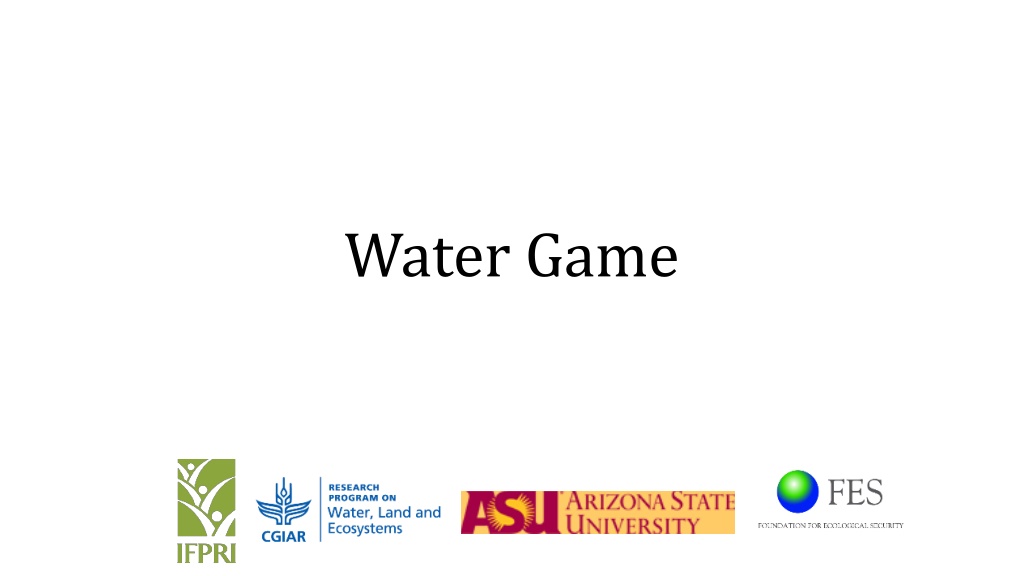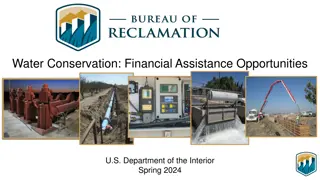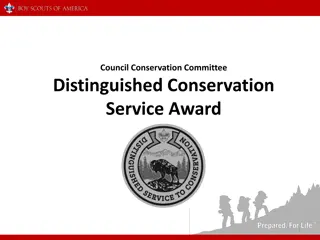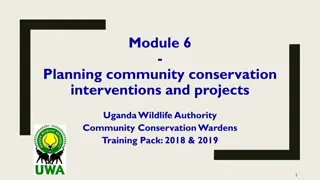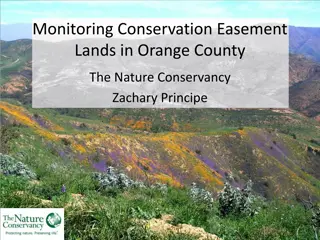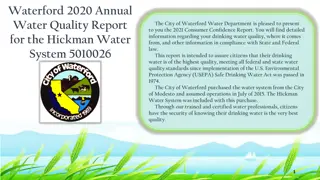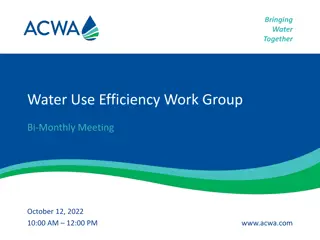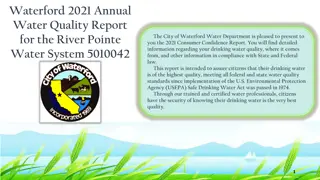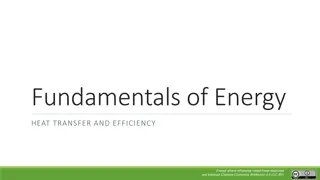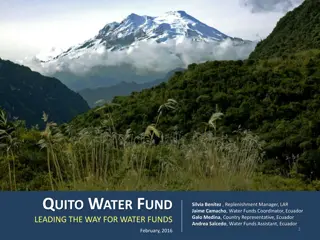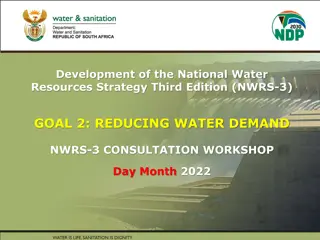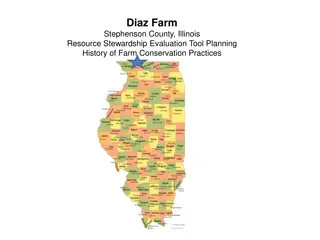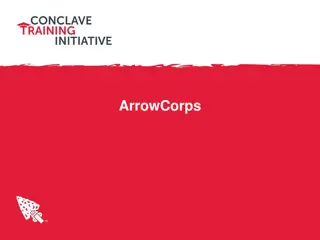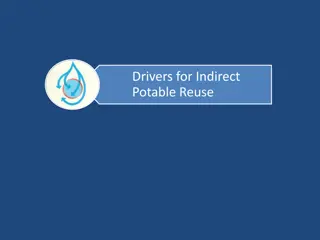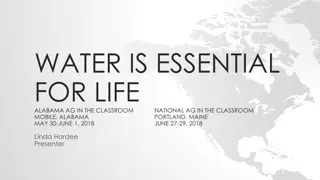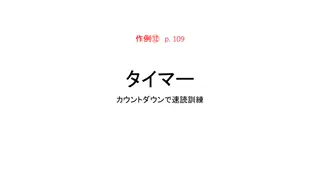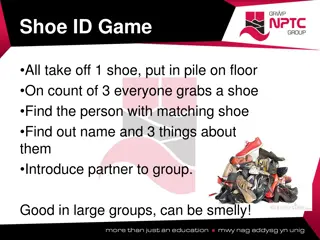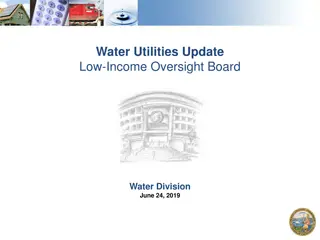Interactive Water Conservation Game for Community Engagement
Explore a thought-provoking water conservation game designed to simulate real-world challenges in groundwater management. Participants navigate decision-making on crop choices, water usage, and recharge strategies, fostering discussions on sustainable water practices. Engage in group debriefings to reflect on learnings and collaborative actions for better water resource management.
- Water conservation
- Groundwater management
- Community engagement
- Sustainable practices
- Interactive game
Download Presentation

Please find below an Image/Link to download the presentation.
The content on the website is provided AS IS for your information and personal use only. It may not be sold, licensed, or shared on other websites without obtaining consent from the author. Download presentation by click this link. If you encounter any issues during the download, it is possible that the publisher has removed the file from their server.
E N D
Presentation Transcript
Context Over-exploitation of water has resulted in water stress Top-down regulations have limited impacts in influencing behaviour and water use Managing groundwater is particularly challenging Though a shared resource, groundwater is often perceived as a private resource Mobile nature invisible to human eyes Effective coordination at the local level can help in a more equitable and sustainable water use
Theory of Change Rainfall Watershed Management Programs Groundwater Recharge Water Harvesting Groundwater Use * Behavior Community Groundwater Budgets *Rules Community Understanding *Understanding NGO Groundwater Level *Environment Facilitation *Process Other Factors Affecting Collective Action Experimental Games State Regulations on Wells State Policy on Energy Crop Prices Conceptual model of factors affecting groundwater levels (Adapted from Playing games to save water: Collective action games for groundwater management in Andhra Pradesh, India. Ruth Meinzen-Dick, et.al. 2018)
Design of the Game Played with group of 5 Participants Separate group for men and men Optional: Players can be rotated Common water source (well / borewell) with 50 units of water Players need to select between two types of Crops Crop A: Uses less water and fetches lower price in market Crop B: Water intensive and fetches higher price in market Based on the crop choices the water falls. In addition 2 units of water is deducted every year to take into account household use on drinking, cooking and other uses. Every year there is also some water recharge
Design of the Game Three zones Blue (sufficient water for irrigation), Yellow (low water level and groundwater is contaminated, so the participants have to pay Rs.200 to get water from outside for household uses) and Red (water is too low and its not possible to extract water and the game ends) Two rounds: Game 1: without communication (10 rounds or till the groundwater reaches the red zone; constant recharge of 7 units of water) Game 2: with communication (1st three rounds with 7 units of recharge, 4th round onwards use a dice to determine recharge)
Community Debriefing Mix group including women & men from different social and economic backgrounds Triggering discussion around: Interconnectedness between cropping patterns and groundwater use How the game was played, what we learned and what we might do as a village? Two ways: Trend line exercise and game discussion Game discussion and crop water budget
Preparing for the Game Groundwater Game Checklist: 8. 5 Envelopes - one for each player to make their crop choice and receive money 9. 200 Currency Notes or tokens representing money (this includes extras) 10.Blank Groundwater Record - enough spaces for up to 25 years total, or 12 years each game 11.Blank Groundwater Graphs 12.Crop Choice Records - 1 per game 13.Writing Pad for Crop Choice Record 14.Ink pen for Crop Choice Record 15.Assorted Colored Markers for Groundwater Record and Groundwater Graph - the best colors to use are: black, brown, red, blue, purple. (Orange and yellow are often hard to see) 1. Groundwater Game Flexi (Ex: 5 feet x 4 feet) 2. Rope and strong tape to hang flexi up in the village 3. Groundwater Marker/ Flexi Strip for moving water level on flexi 4. Good double-sided sticky tape that will re-stick when water marker is moved 5. Crop Images: 3-4 options of local crops that use less water. 6 copies of each crop 6. Crop Images: 3-4 options of local water intensive crops. 6 copies of each crop 7. 2 dice with the side with 6 dots covered, in the game, this represents 0.
Organizing the Game Understanding the local context (gender & power dynamics; cropping pattern; biophysical conditions geology, soil type, forest cover, rainfall patterns) Mobilizing the community and selection of participants (representation from different sections caste/religion/age, village leaders / decision makers, borewell owners and users) Selection of game site, timing and other logistics (common sites where everyone can participate - under a large shade tree, school room / community hall etc., select good time and date for game & debrief)
